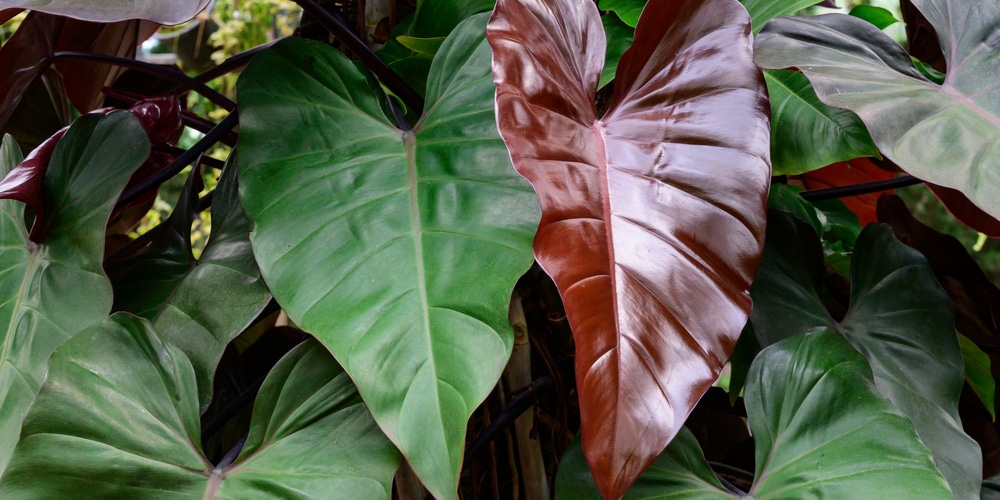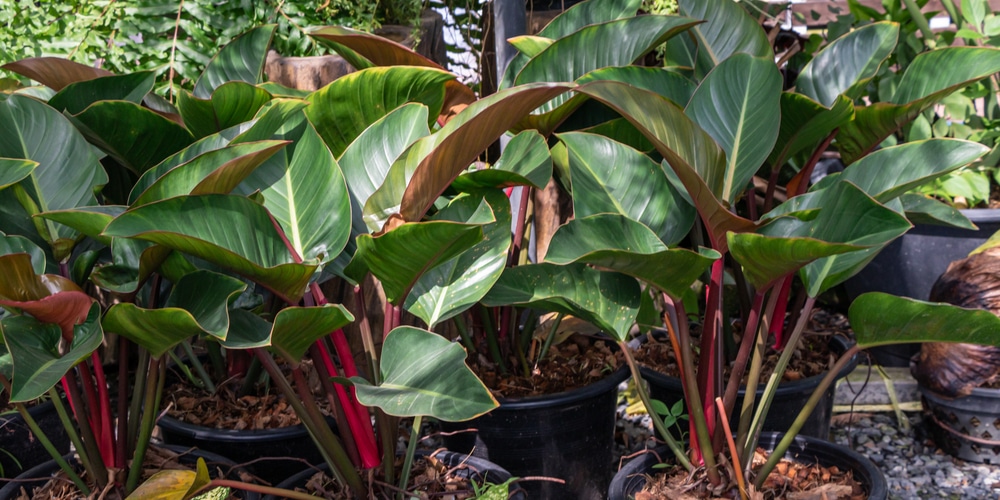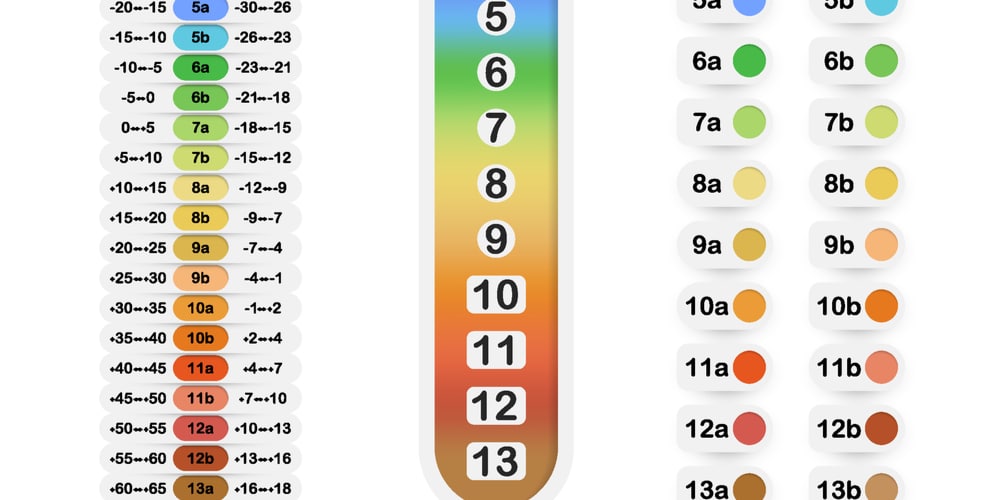Tropical plants can make your house look like a jungle, and who doesn’t like more green in their homes? One of the most popular (and stunning) houseplants is Blushing Philodendron, which you may know for its large, glossy, heart-shaped lush leaves.
If you are curious to learn more about Blushing Philodendron and how to grow and take care of this plant, you’ve landed in the right place. In this essential guide, you’ll find everything you must know to make this plant thrive in your house.
What is a Blushing Philodendron
The “blushing” part of the name comes from the reddish coloration the leaves get as they emerge. Also, the vivid red stems, visible under the abundant foliage, might be another reason for the plant’s name.
Besides the beautiful contrast, one of the most impressive features is the size of the leaves: they can grow more than 16 inches long. In its natural habitat (the tropical forest of Latin America), this aggressive climber can reach 60 feet and more. Of course, you can give it something to climb indoors too. Moss sticks work wonderfully to recreate the South American jungle habitat in your house.
How to care for a Blushing Philodendron
For starters, you might be relieved to learn that taking care of Blushing Philodendron is not particularly challenging. Given that you follow the tips included in this essential guide, you’ll notice how easy it can be to recreate a jungle environment in your house.
Because of the nature of this plant, it thrives in relatively warm and humid conditions. They are not as cold and drought tolerant as other species, so you may take that into account before planting one at home. Plus, think about providing the stems with some support. As mentioned, a wooden stick can create stunning results.
Sunlight
Blushing Philodendron doesn’t require direct sunlight, which is why this plant does much better indoors. Avoid exposing it to the full sun outdoors. Instead, place it no more than 6 feet away from a window to ensure it will receive enough light to survive.
If you notice several leaves turning yellow, the plant might be receiving too much sunlight. Consider moving the vase to a window that only gets morning light. If you don’t notice any change, it might be a warning that it is getting too much water (more on that in the next section).
On the other hand, if you notice wide spaces between the leaves, your plant might need more light. If your house doesn’t receive much sun, consider getting artificial grow lights.
Watering
As with many tropical plants, you should water your Philodendron regularly. However, avoid overdoing it, as you may cause it to rot. As a rule of thumb, water your plant when the soil starts to dry. Avoid using cold water, as it might create a shock to your tropical houseplant. To prevent overwatering, feel the earth with your fingers. If it is still moist at a couple of inches down, you should wait.
Also, water your plant slightly less in winter, when the growth slows.
Pruning
You may need to trim and prune your plant once in a while. Doing so will help you maintain or limit its size and shape. The good news is that you won’t need to do it often, but keep an eye on your plant if you notice it’s becoming too long or too large for its space.
All you need is a pair of sharp scissors. Remove any yellow leaves or unhealthy-looking ones. Plus, trim longer stems to help them regrow.
Temperature and Humidity
As you may expect, Blushing Philodendron requires plenty of moisture and heat, which is just another reason why this plant thrives at room temperature. To be more precise, this plant does extremely well at temperatures between 55 and 80.
There is no need for additional humidity, as it absorbs it from the soil. Just make sure you water your plant regularly, but not too much. If you want to ensure your plant doesn’t dry, you can use a humidity monitor. One of the first symptoms of lack of humidity in your tropical plant is the appearance of brown leaf tips. To boost humidity, you can use a cool-mist room humidifier. Aim to maintain 45% or higher humidity near your plant to make them feel at home.
USDA Climate Zones for Outdoor Growing
According to the USDA Hardiness Zone Map (the standard by which gardeners know which plants can thrive in specific areas), Blushing Philodendron can live outdoors in zones 10 and 11. In the US, that means the southern and coastal regions. If you live below zone 10 (in the mainland), grow these plants indoors.
Fertilizer
It is a good idea to feed your Blushing Philodendron with a water-soluble fertilizer in spring and summer once a month. Indeed, you’ll need to support its fast growth with the right amount of nutrients.
Soil Type
This plant requires quick-draining soil rich in nutrients. Select soil mixes that are not too heavy, or consider adding some sand to the mixture. Avoid making it too light because it will make the plant dry too quickly without absorbing the nutrients. If you can, go for slightly acidic to neutral soils. Look for a pH between 5.8 and 7.5.
If you like using commercial products, it is best to use African violet soil, orchid, or succulent mix. On the other hand, if you want to make your soil, use a combination of peat and perlite. You can also use regular potting soil and add sand to improve drainage.
Propagation
Because of its rapid growth, you may need to propagate your plant using the “stem method.” To do so, cut 3 to 4 inches of stem tips below a leaf node (where the leaf attaches to the stem) and place them in a moist potting mix. Do so in the summer or spring for best results. In about 20- 30 days, you should notice some roots in the cuttings. In a few more weeks, the plant should establish on the soil. Once it starts growing, consider repotting it in a larger container.
Conclusion
So now you should have all the information you need to start growing your tropical plant. Don’t hesitate: make your house look even more attractive with a good splash of green!
Related article: Why is my philodendron turning yellow?


